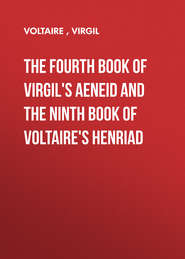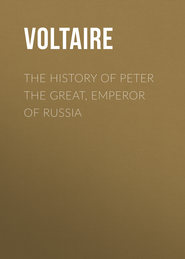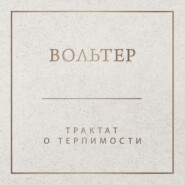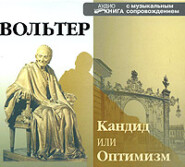По всем вопросам обращайтесь на: info@litportal.ru
(©) 2003-2024.
✖
A Philosophical Dictionary, Volume 05
Настройки чтения
Размер шрифта
Высота строк
Поля
Tortato, bishop of Avila, near the close of the fifteenth century, declares in his commentary on Genesis, that the Christian faith is shaken, if the earth is believed to be round. Columbus, Vespucius, and Magellan, not having the fear of excommunication by this learned bishop before their eyes, the earth resumed its rotundity in spite of him.
Then man went from one extreme to the other, and the earth was regarded as a perfect sphere. But the error of the perfect sphere was the mistake of philosophers, while that of a long, flat earth was the blunder of idiots.
When once it began to be clearly known that our globe revolves on its own axis every twenty-four hours, it might have been inferred from that alone that its form could not be absolutely round. Not only does the centrifugal zone considerably raise the waters in the region of the equator, by the motion of the diurnal rotation, but they are moreover elevated about twenty-five feet, twice a day, by the tides; the lands about the equator must then be perfectly inundated. But they are not so; therefore the region of the equator is much more elevated, in proportion, than the rest of the earth: then the earth is a spheroid elevated at the equator, and cannot be a perfect sphere. This proof, simple as it is, had escaped the greatest geniuses: because a universal prejudice rarely permits investigation.
We know that, in 1762, in a voyage to Cayenne, near the line, undertaken by order of Louis XIV., under the auspices of Colbert, the patron of all the arts, Richer, among many other observations, found that the oscillations or vibrations of his timepiece did not continue so frequent as in the latitude of Paris, and that it was absolutely necessary to shorten the pendulum one line and something more than a quarter. Physics and geometry were at that time not nearly so much cultivated as they now are; what man would have believed that an observation so trivial in appearance, a line more or less, could lead to the knowledge of the greatest physical truths? It was first of all discovered that the weight must necessarily be less on the equator than in our latitudes, since weight alone causes the oscillation of a pendulum. Consequently, the weight of bodies being the less the farther they are from the centre of the earth, it was inferred that the region of the equator must be much more elevated than our own – much more remote from the centre; so the earth could not be an exact sphere.
Many philosophers acted, on the occasion of these discoveries, as all men act when an opinion is to be changed – they disputed on Richer's experiment; they pretended that our pendulums made their vibrations more slowly about the equator only because the metal was lengthened by the heat; but it was seen that the heat of the most burning summer lengthens it but one line in thirty feet; and here was an elongation of a line and a quarter, a line and a half, or even two lines, in an iron rod, only three feet and eight lines long.
Some years after MM. Varin, Deshayes, Feuillée, and Couplet, repeated the same experiment on the pendulum, near the equator; and it was always found necessary to shorten it, although the heat was very often less on the line than fifteen or twenty degrees from it. This experiment was again confirmed by the academicians whom Louis XV. sent to Peru; and who were obliged, on the mountains about Quito, where it froze, to shorten the second pendulum about two lines.
About the same time, the academicians who went to measure an arc of the meridian in the north, found that at Pello, within the Polar circle, it was necessary to lengthen the pendulum, in order to have the same oscillations as at Paris: consequently weight is greater at the polar circle than in the latitude of France, as it is greater in our latitude than at the equator. Weight being greater in the north, the north was therefore nearer the centre of the earth than the equator; therefore the earth was flattened at the poles.
Never did reasoning and experiment so fully concur to establish a truth. The celebrated Huygens, by calculating centrifugal forces, had proved that the consequent diminution of weight on the surface of a sphere was not great enough to explain the phenomena, and that therefore the earth must be a spheroid flattened at the poles. Newton, by the principles of attraction, had found nearly the same relations: only it must be observed, that Huygens believed this force inherent in bodies determining them towards the centre of the globe, to be everywhere the same. He had not yet seen the discoveries of Newton; so that he considered the diminution of weight by the theory of centrifugal forces only. The effect of centrifugal forces diminishes the primitive gravity on the equator. The smaller the circles in which this centrifugal force is exercised become, the more it yields to the force of gravity; thus, at the pole itself the centrifugal force being null, must leave the primitive gravity in full action. But this principle of a gravity always equal, falls to nothing before the discovery made by Newton, that a body transported, for instance, to the distance of ten diameters from the centre of the earth, would weigh one hundred times less than at the distance of one diameter.
It is then by the laws of gravitation, combined with those of the centrifugal force, that the real form of the earth must be shown. Newton and Gregory had such confidence in this theory that they did not hesitate to advance that experiments on weight were a surer means of knowing the form of the earth than any geographical measurement.
Louis XIV. had signalized his reign by that meridian which was drawn through France: the illustrious Dominico Cassini had begun it with his son; and had, in 1701, drawn from the feet of the Pyrenees to the observatory a line as straight as it could be drawn, considering the almost insurmountable obstacles which the height of mountains, the changes of refraction in the air, and the altering of instruments were constantly opposing to the execution of so vast and delicate an undertaking; he had, in 1701, measured six degrees eighteen minutes of that meridian. But, from whatever cause the error might proceed, he had found the degrees towards Paris, that is towards the north, shorter than those towards the Pyrenees and the south. This measurement gave the lie both to the theory of Norwood and to the new theory of the earth flattened at the poles. Yet this new theory was beginning to be so generally received that the academy's secretary did not hesitate, in his history of 1701, to say that the new measurements made in France proved the earth to be a spheroid flattened at the poles. The truth was, that Dominico Cassini's measurement led to a conclusion directly opposite; but, as the figure of the earth had not yet become a question in France, no one at that time was at the trouble of combating this false conclusion. The degrees of the meridian from Collioure to Paris were believed to be exactly measured; and the pole, which from that measurement must necessarily be elongated, was believed to be flattened.
An engineer, named M. de Roubais, astonished at this conclusion, demonstrated that, by the measurements taken in France, the earth must be an oblate spheroid, of which the meridian passing through the poles must be longer than the equator, the poles being elongated. But of all the natural philosophers to whom he addressed his dissertation, not one would have it printed; because it seemed that the academy had pronounced it as too bold in an individual to raise his voice. Some time after the error of 1701 was acknowledged, that which had been said was unsaid; and the earth was lengthened by a just conclusion drawn from a false principle. The meridian was continued in the same principle from Paris to Dunkirk; and the degrees were still found to grow shorter as they approached the north. People were still mistaken respecting the figure of the earth, as they had been concerning the nature of light. About the same time, some mathematicians who were performing the same operations in China were astonished to find a difference among their degrees, which they had expected to find alike; and to discover, after many verifications, that they were shorter towards the north than towards the south. This accordance of the mathematicians of France with those of China was another powerful reason for believing in the oblate spheroid. In France they did still more; they measured parallels to the equator. It is easily understood that on an oblate spheroid our degrees of longitude must be shorter than on a sphere. M. de Cassini found the parallel which passes through St. Malo to be shorter by one thousand and thirty-seven toises than it would have been on a spherical earth.
All these measurements proved that the degrees had been found as it was wished to find them. They overturned, for a time, in France, the demonstrations of Newton and Huygens; and it was no longer doubted that the poles were of a form precisely contrary to that which had at first been attributed to them. In short, nothing at all was known about the matter.
At length, other academicians, who had visited the polar circle in 1736, having found, by new measurements, that the degree was longer there than in France, people doubted between them and the Cassinis. But these doubts were soon after removed: for these same astronomers, returning from the pole, examined afresh the degree to the north of Paris, measured by Picard, in 1677, and found it to be a hundred and twenty-three toises longer than it was according to Picard's measurement. If, then, Picard, with all his precautions, had made his degree one hundred and twenty-three toises too short, it was not at all unlikely that the degrees towards the south had in like manner been found too long. Thus the first error of Picard, having furnished the foundations for the measurements of the meridian, also furnished an excuse for the almost inevitable errors which very good astronomers might have committed in the course of these operations.
Unfortunately, other men of science found that, at the Cape of Good Hope, the degrees of the meridian did not agree with ours. Other measurements, taken in Italy, likewise contradicted those of France, and all were falsified by those of China. People again began to doubt, and to suspect, in my opinion quite reasonably, that the earth had protuberances. As for the English, though they are fond of travelling, they spared themselves the fatigue, and held fast their theory.
The difference between one diameter and the other is not more than five or six of our leagues – a difference immense in the eyes of a disputant, but almost imperceptible to those who consider the measurement of the globe only in reference to the purposes of utility which it may serve. A geographer could scarcely make this difference perceptible on a map; nor would a pilot be able to discover whether he was steering on a spheroid or on a sphere. Yet there have been men bold enough to assert that the lives of navigators depended on this question. Oh quackery! will you spare no degrees – not even those of the meridian?
FIGURED – FIGURATIVE
We say, a truth "figured" by a fable, by a parable; the church "figured" by the young spouse in Solomon's Song; ancient Rome "figured" by Babylon. A figurative style is constituted by metaphorical expressions, figuring the things spoken of – and disfiguring them when the metaphors are not correct.
Ardent imagination, passion, desire – frequently deceived – produce the figurative style. We do not admit it into history, for too many metaphors are hurtful, not only to perspicuity, but also to truth, by saying more or less than the thing itself.
In didactic works, this style should be rejected. It is much more out of place in a sermon than in a funeral oration, because the sermon is a piece of instruction in which the truth is to be announced; while the funeral oration is a declaration in which it is to be exaggerated.
The poetry of enthusiasm, as the epopee and the ode, is that to which this style is best adapted. It is less admissible in tragedy, where the dialogue should be natural as well as elevated; and still less in comedy, where the style must be more simple.
The limits to be set to the figurative style, in each kind, are determined by taste. Baltasar Gracian says, that "our thoughts depart from the vast shores of memory, embark on the sea of imagination, arrive in the harbor of intelligence, and are entered at the custom house of the understanding."
This is precisely the style of Harlequin. He says to his master, "The ball of your commands has rebounded from the racquet of my obedience." Must it not be owned that such is frequently that oriental style which people try to admire? Another fault of the figurative style is the accumulating of incoherent figures. A poet, speaking of some philosophers, has called them:
D'ambitieux pygmées
Qui sur leurs pieds vainement redressés
Et sur des monts d'argumens entassés
De jour en jour superbes Encelades,
Vont redoublant leurs folles escalades.
When philosophers are to be written against, it should be done better. How do ambitious pygmies, reared on their hind legs on mountains of arguments, continue escalades? What a false and ridiculous image! What elaborate dulness!
In an allegory by the same author, entitled the "Liturgy of Cytherea," we find these lines:
De toutes parts, autour de l'inconnue,
Ils vont tomber comme grêle menue,
Moissons des cœurs sur la terre jonchés,
Et des Dieux même à son char attachés.
De par Venus nous venons cette affaire
Si s'en retourne aux cieux dans son sérail,
En ruminant comment il pourra faire
Pour ramener la brebis au bercail.
Here we have harvests of hearts thrown on the ground like small hail; and among these hearts palpitating on the ground, are gods bound to the car of the unknown; while love, sent by Venus, ruminates in his seraglio in heaven, what he shall do to bring back to the fold this lost mutton surrounded by scattered hearts. All this forms a figure at once so false, so puerile, and so incoherent – so disgusting, so extravagant, so stupidly expressed, that we are astonished that a man, who made good verses of another kind, and was not devoid of taste, could write anything so miserably bad.
Figures, metaphors, are not necessary in an allegory; what has been invented with imagination may be told with simplicity. Plato has more allegories than figures; he often expresses them elegantly and without ostentation.
Nearly all the maxims of the ancient orientals and of the Greeks were in the figurative style. All those sentences are metaphors, or short allegories; and in them the figurative style has great effect in rousing the imagination and impressing the memory.
We know that Pythagoras said, "In the tempest adore the echo," that is, during civil broils retire to the country; and "Stir not the fire with the sword," meaning, do not irritate minds already inflamed. In every language, there are many common proverbs which are in the figurative style.
FIGURE IN THEOLOGY
It is quite certain, and is agreed by the most pious men, that figures and allegories have been carried too far. Some of the fathers of the church regard the piece of red cloth, placed by the courtesan Rahab at her window, for a signal to Joshua's spies, as a figure of the blood of Jesus Christ. This is an error of an order of mind which would find mystery in everything.
Nor can it be denied that St. Ambrose made very bad use of his taste for allegory, when he says, in his book of "Noah and the Ark," that the back door of the ark was a figure of our hinder parts.
All men of sense have asked how it can be proved that these Hebrew words, "maher, salas-has-has," (take quick the spoils) are a figure of Jesus Christ? How is Judah, tying his ass to a vine, and washing his cloak in the wine, also a figure of Him. How can Ruth, slipping into bed to Boaz, figure the church, how are Sarah and Rachel the church, and Hagar and Leah the synagogue? How, do the kisses of the Shunamite typify the marriage of the church? A volume might be made of these enigmas, which, to the best theologians of later times, have appeared to be rather far-fetched than edifying.
The danger of this abuse is fully admitted by Abbé Fleury, the author of the "Ecclesiastical History." It is a vestige of rabbinism; a fault into which the learned St. Jerome never fell. It is like oneiromancy, or the explanation of dreams. If a girl sees muddy water, when dreaming, she will be ill-married; if she sees clear water, she will have a good husband; a spider denotes money, etc. In short, will enlightened posterity believe it? The understanding of dreams has, for more than four thousand years, been made a serious study.
Symbolical Figures.
All nations have made use of them, as we have said in the article "emblem." But who began? Was it the Egyptians? It is not likely. We think we have already more than once proved that Egypt is a country quite new, and that many ages were requisite to save the country from inundations, and render it habitable. It is impossible that the Egyptians should have invented the signs of the zodiac, since the figures denoting our seed-time and harvest cannot coincide with theirs. When we cut our corn, their land is covered with water; and when we sow, their reaping time is approaching. Thus the bull of our zodiac and the girl bearing ears of corn cannot have come from Egypt.
Here is also an evident proof of the falsity of the new paradox, that the Chinese are an Egyptian colony. The characters are not the same. The Chinese mark the course of the sun by twenty-eight constellations and the Egyptians, after the Chaldæans, reckoned only twelve, like ourselves.
The figures that denote the planets are in China and in India all different from those of Egypt and of Europe; so are the signs of the metals; so is the method of guiding the hand in writing. Nothing could have been more chimerical than to send the Egyptians to people China.
All these fabulous foundations, laid in fabulous times, have caused an irreparable loss of time to a prodigious multitude of the learned, who have all been bewildered in their laborious researches, which might have been serviceable to mankind if directed to arts of real utility.
Pluche, in his History, or rather his fable, of the Heavens, assures us that Ham, son of Noah, went and reigned in Egypt, where there was nobody to reign over; that his son Menes was the greatest of legislators, and that Thoth was his prime minister.
According to him and his authorities, this Thoth, or somebody else, instituted feasts in honor of the deluge; and the joyful cry of "Io Bacche," so famous among the Greeks, was, among the Egyptians, a lamentation. "Bacche" came from the Hebrew "beke" signifying sobs, and that at a time when the Hebrew people did not exist. According to this explanation, "joy" means "sorrow," and "to sing" signifies "to weep."
The Iroquois have more sense. They do not take the trouble to inquire what passed on the shores of Lake Ontario some thousand years ago: instead of making systems, they go hunting.
The same authors affirm that the sphinxes, with which Egypt was adorned, signified superabundance, because some interpreters have asserted that the Hebrew word "spang" meant an "excess"; as if the Egyptians had taken lessons from the Hebrew tongue, which is, in great part, derived from the Phœnician: besides, what relation has a sphinx to an abundance of water? Future schoolmen will maintain, with greater appearance of reason, that the masks which decorate the keystones of our windows are emblems of our masquerades; and that these fantastic ornaments announced that balls were given in every house to which they were affixed.















